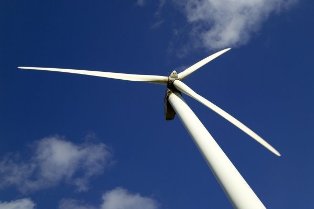Types of wind farms
 The ground ones are the most common, due to the simpler installation. Offshore wind turbines, descendants of windmills, are installed at natural heights. In addition, the industrial-grade wind generator can be assembled and commissioned in 10 days. Obtaining the necessary permits for its operation, however, requires much more time. The most powerful power plant of this type is located in Roscoe (Texas, USA) with a total capacity of 780 MW and occupies an area of approximately 400 km. sq.
The ground ones are the most common, due to the simpler installation. Offshore wind turbines, descendants of windmills, are installed at natural heights. In addition, the industrial-grade wind generator can be assembled and commissioned in 10 days. Obtaining the necessary permits for its operation, however, requires much more time. The most powerful power plant of this type is located in Roscoe (Texas, USA) with a total capacity of 780 MW and occupies an area of approximately 400 km. sq.
Onshore wind turbines, installed a short distance from the ocean or sea shoreline, are becoming increasingly popular. Due to the temperature difference between the land and the water surface, a strong breeze blows along the coast twice during the day. During the day, the sea breeze is directed towards the shore, and at night the breeze moves from the cooled shore to the water.
Like other areas of alternative energy use such as lighting technology, tidal energy and geothermal processes, wind energy continues to develop. Offshore wind farms, which are being built in the sea about 10 kilometers from the coast, are quite promising solutions.Such deployment of intragenerators does not require the use of significant land resources and provides high efficiency due to regular and strong sea winds. These power plants rise on the shelf areas of the shallow sea. Wind turbines are installed on pile foundations. Naturally, such a design is much more expensive than a traditional ground-based one. The largest offshore wind farm is Midelgründen (Denmark) with an installed capacity of 40 MW.
Floating wind farms open a new page in the history of alternative energy. The first large project of this kind was implemented in Norway in the summer of 2009. What cannot be said, for example, about solar power plants, because lighting technology has not changed significantly since the introduction of the first solar panels, and the general design of light generators has remained the same.
The Norwegian company StatoilHydro has designed floating wind turbines for deep water. A 2.3 MW demonstration version was unveiled in September 2009. The 5,300-ton, 65-meter-tall turbine, called Hywind, is located 10 kilometers off the southwest coast of Norway. The height of the wind turbine tower is 65 meters, and its underwater part goes to a depth of 100 meters. Ballast is used to stabilize the wind turbine tower and submerge it to the required depth. To prevent free drift, the entire structure is anchored with three cables. In the future, the company expects to increase the turbine power to 5 MW by increasing the diameter of the rotor.

